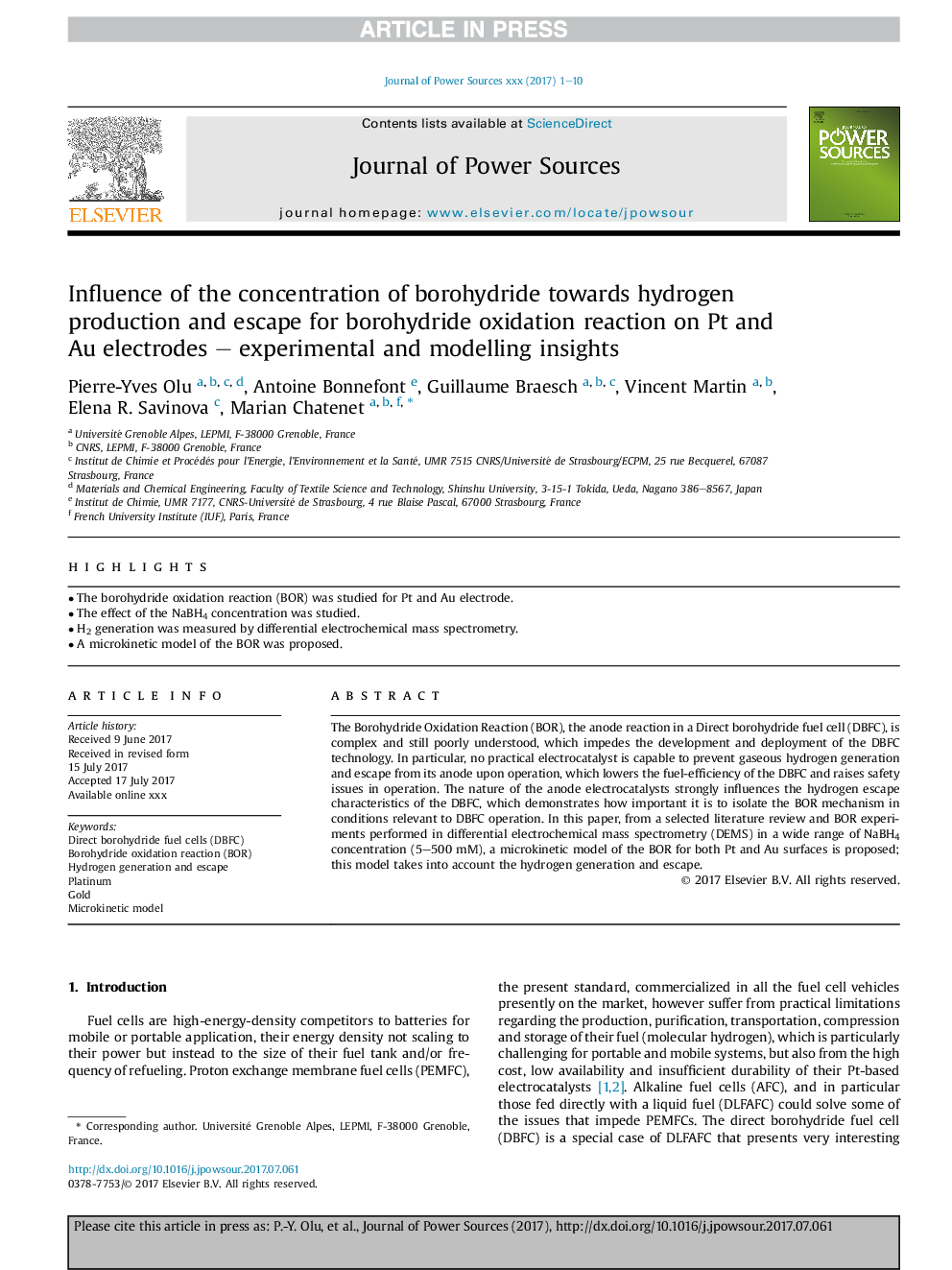| کد مقاله | کد نشریه | سال انتشار | مقاله انگلیسی | نسخه تمام متن |
|---|---|---|---|---|
| 7726107 | 1497857 | 2018 | 10 صفحه PDF | دانلود رایگان |
عنوان انگلیسی مقاله ISI
Influence of the concentration of borohydride towards hydrogen production and escape for borohydride oxidation reaction on Pt and Au electrodes - experimental and modelling insights
دانلود مقاله + سفارش ترجمه
دانلود مقاله ISI انگلیسی
رایگان برای ایرانیان
کلمات کلیدی
موضوعات مرتبط
مهندسی و علوم پایه
شیمی
الکتروشیمی
پیش نمایش صفحه اول مقاله

چکیده انگلیسی
The Borohydride Oxidation Reaction (BOR), the anode reaction in a Direct borohydride fuel cell (DBFC), is complex and still poorly understood, which impedes the development and deployment of the DBFC technology. In particular, no practical electrocatalyst is capable to prevent gaseous hydrogen generation and escape from its anode upon operation, which lowers the fuel-efficiency of the DBFC and raises safety issues in operation. The nature of the anode electrocatalysts strongly influences the hydrogen escape characteristics of the DBFC, which demonstrates how important it is to isolate the BOR mechanism in conditions relevant to DBFC operation. In this paper, from a selected literature review and BOR experiments performed in differential electrochemical mass spectrometry (DEMS) in a wide range of NaBH4 concentration (5-500Â mM), a microkinetic model of the BOR for both Pt and Au surfaces is proposed; this model takes into account the hydrogen generation and escape.
ناشر
Database: Elsevier - ScienceDirect (ساینس دایرکت)
Journal: Journal of Power Sources - Volume 375, 31 January 2018, Pages 300-309
Journal: Journal of Power Sources - Volume 375, 31 January 2018, Pages 300-309
نویسندگان
Pierre-Yves Olu, Antoine Bonnefont, Guillaume Braesch, Vincent Martin, Elena R. Savinova, Marian Chatenet,